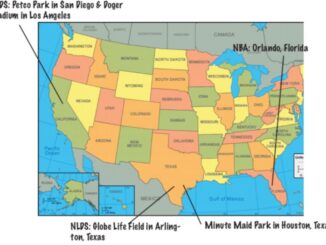
photo credit: Georgia Browning
The amount of carbon dioxide in the atmosphere has risen by 25 percent since 1958, according to the National Oceanic and Atmospheric Administration. Tim Walz, the democratic vice presidential candidate and governor of Minnesota is implementing policies to prevent this and other negative effects climate change can cause.
Walz has implemented a clean power mandate, legislation to require car companies to deliver more electric vehicles, and replaced a corroded oil pipeline to prevent oil spillage, all according to Star Tribune.
“Usually, Democrats tend to be more aggressive on climate change, whilst Republicans tend to be less,” AP Government Teacher John Carmichael said.
As governor, Walz utilized President Joe Biden’s Inflation Reduction Act (IRA for short) to his advantage.
The IRA, which was passed in 2022, provides grants and loans to investments that not only create jobs but also benefit the environment.
“Renewable energy involves a lot of job creation,” AP Environmental Science Teacher Jessica Timmons said.
Walz has set up Minnesota to receive $200 million in IRA money, which will be used to reduce the effects agriculture has on climate change.
Deforestation is used to clear land for agriculture, and this can release carbon dioxide, which is bad for the environment.
“Generally speaking, Democrats see it (climate change) as something that affects future generations,” Carmichael said.
Walz is no exception to this, as he has signed legislation that pledges to make Minnesota carbon-free by 2050.
The bill required Minnesota’s electricity utilities to transition to carbon-free energy sources.
“Every single one of us will be impacted by climate change, and Walz acknowledges that in the renewable energy bill,” Timmons said
Minnesota’s largest utility, Xcel Energy, has received $315 million in benefits.
Xcel Energy is aggressive on the topic of climate change, and it strives to simultaneously create jobs whilst battling climate change.
“Xcel Energy was the first U.S. energy provider to set aggressive goals to reduce carbon emissions from electricity, heating and transportation,” according to the Xcel Energy website.
Walz has also used funding for green hydrogen production plants and massive solar plants.
Hydrogen has many uses, while it is primarily used for industry. The hydrogen production plants turn water into hydrogen without environmental harm.
“Renewable energy might have a high upfront cost associated with it, but it can pay off big time over decades,” Timmons said.
On average, these hydrogen plants can cost between $10 and 20 million.
But green hydrogen only emits water vapors into the air, which are not harmful to the environment.
“The environmental impact and energy efficiency of hydrogen depends on how it is produced,” according to the U.S. Department of Energy’s website.
Solar power plants are another means of green energy, as they use the sun’s radiation to form energy. This is a fairly easy way to get clean energy, at no cost to the environment.
Under governor Walz, Minnesota received a $60 million dollar grant from the EPA to deliver solar power. This will have environmental benefits, and save families money on energy costs. According to Minnesota’s website.
“It not only reduces harmful emissions and greenhouse gasses that negatively impact our climate and therefore our environment, but it can help keep our water, our soil, and our air clean for generations,” Timmons said.
Both of these forms of energy are alternatives to oil, which is gained by oil fracking.
Oil fracking can release both air and water pollution. Which in the long run, makes it harmful for the environment.
“The reality is we only have approximately 52 years of petroleum left to extract on this planet,” Timmons said.
These plants will help Minnesota to become more environmentally friendly in the coming years.
Will Walz help current Vice President and Democratic presidential nominee Kamala Harris to win the election? It is hard to say.
“Generally speaking, climate policies are one of the policies people want to see,” Carmichael said.
With that in mind, it’ll all come down to the voters in November.


